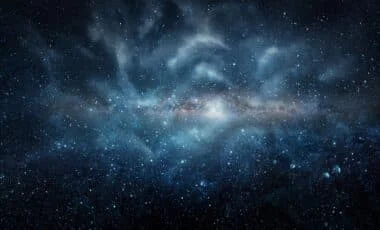
Cosmic Titans: Unveiling the Largest Structures in the Universe
Astronomers are continually pushing the boundaries of our understanding of the cosmos. Recent discoveries have revealed structures of unprecedented scale, challenging existing cosmological models. Two of the most notable finds, Quipu and the Hercules-Corona Borealis Great Wall, have captivated scientists and sparked intense debate about the distribution of matter in the universe.
Quipu: A Cosmic Web of Immense Proportions
Dubbed "Quipu," this intergalactic structure sprawls across an astounding 1.3 billion light-years and boasts a mass of 200 quadrillion suns. This makes it the largest structure ever discovered, dwarfing even previously identified superclusters like Shapley and Laniakea. The name "Quipu" is inspired by the Inca system of knotted cords, reflecting its intricate network of interconnected galaxies. Researchers describe it as a "giant web," profoundly impacting the distribution of mass on a grand scale.
What makes Quipu even more intriguing is that it is not alone. Scientists have identified four other superstructures of comparable size, collectively concentrating almost half of the galaxy clusters within the known universe. This challenges our current understanding of how matter is distributed throughout space.
Quipu's influence extends beyond mere size; it also affects light traveling through the universe. Its immense mass acts as a gigantic magnifying glass, warping spacetime and bending light via gravitational lensing. This complicates astronomical observations and potentially impacts measurements of the Hubble constant, which is used to calculate the age and evolution of the cosmos.
According to the study, "In the course of future cosmic evolution, these superstructures are bound to break up into several units which will then collapse. They are therefore transitory configurations. But for the time being, they are special physical entities with characteristic properties and special cosmic environments that deserve special attention."
Hercules-Corona Borealis Great Wall: Redefining Cosmic Size
Adding to the intrigue, the Hercules-Corona Borealis Great Wall is subject to reevaluation and might be even larger and closer than previously believed. Some astronomers estimate its size to be around ten billion light-years across, dwarfing structures like the Sloan Great Wall. Dr. Jon Hakkila from the University of Alabama in Huntsville and his team using gamma-ray bursts (GRBs), which shine brightly enabling astronomic data, have been used to demonstrate that galaxies cluster in a area bigger than anything else known.
"It is larger than the size of most anything to which it might be compared," said Dr. Hakkila, emphasizing the challenges this sprawling arrangement poses to our standard theories of universal uniformity.
However, some scientists advise caution, citing the limitations of current GRB datasets and the potential for sampling bias. The imprecision of the burst positions and redshifts poses challenges in precisely defining the structures. The cosmological principle generally advises caution on structures beyond about 1.2 billion light years.
The Future of Cosmic Cartography
Future missions, such as the proposed European THESEUS (Transient High Energy Sky and Early Universe Surveyor), hope to revolutionize the way to outline structures such as Hercules-Corona Borealis Great Wall. Upcoming missions may solve this lack of information and either solidify or discredit the findings.
These findings urge scientists to reevaluate large-scale structures in the cosmos and how they can influence our cosmic map.
These monumental structures challenge our understanding of the universe and its evolution. As we continue to observe and analyze these cosmic giants, we may unlock new secrets about the formation and distribution of matter in the cosmos. What other colossal structures remain hidden in the vast expanse of space? Leave your thoughts and theories in the comments below!